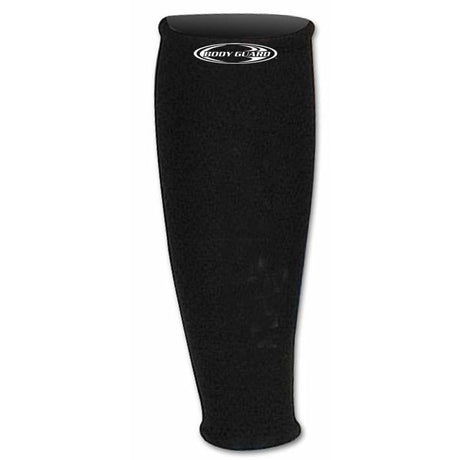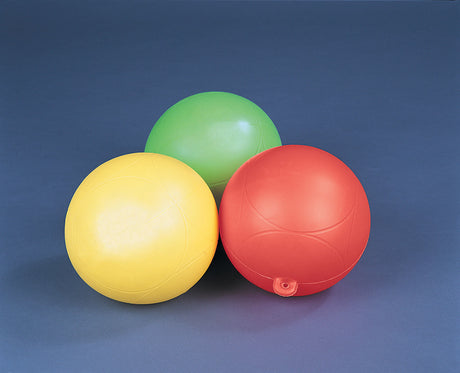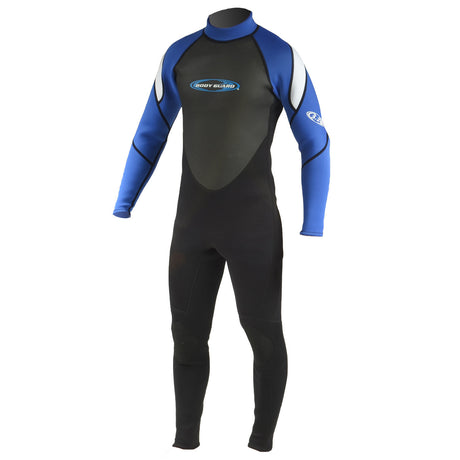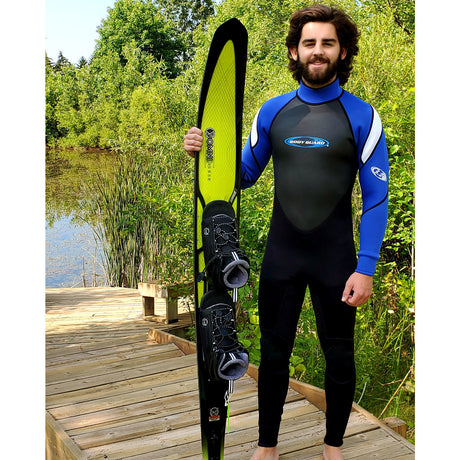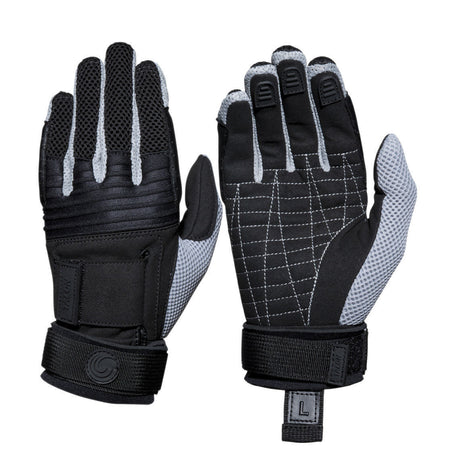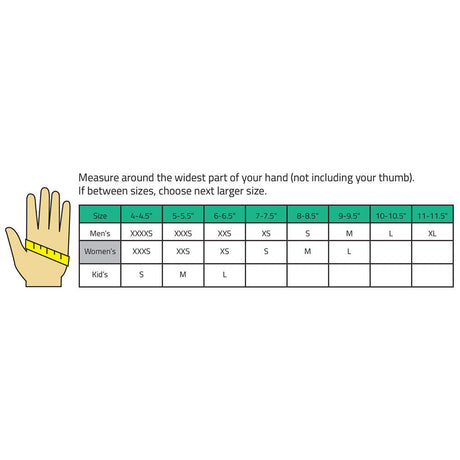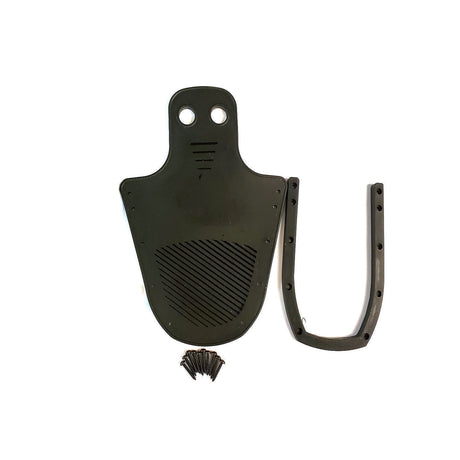When it comes to hitting the local lake, river or shore for a day of water skiing or wakeboarding, what matters most isn't what's on or behind your boat, but what's underneath the water. We're talking about your boat's prop.
Picking the right boat propeller ensures your boat runs smoothly and reliably, with good speed and control, and without stressing your motor.
Key Parts of a Propeller
These are all the important aspects of any boat propeller. Together, these determine how well (or poorly) a prop will work with your boat and engine combination.
Pitch
Pitch measures the angle of a prop's blades. Pitch determines how far the prop moves forward with each rotation. A higher pitch means the prop will travel further per rotation, resulting in greater acceleration and speed.
But higher pitch requires more engine power to turn the propeller. Conversely, less pitch requires less power, but it produces less acceleration and speed.
Prop pitch measurements are based on the prop's distance traveled per rotation. Pitch is typically advertised in inches, or with a "p" next to the value.
For example, a 14"-diameter prop with 20" of pitch will be advertised as 14" x 20", or 14" 20p.
The key takeaway is this: The higher a prop's pitch, the more engine power is required, and the greater the thrust.
Blade Count
Most recreational boat props come with three or four blades. Each configuration has its pros and cons.
Three-Blade Advantages
High top speed: Three-blade props typically produce greater top speeds, making them ideal for slalom skiing, and producing big wakes.
Less drag: Fewer blades means less turbulence, which translates into greater efficiency. For this reason, three-blade props may provide a better option for smaller displacement engines, and those looking for better MPGs.
Three-Blade Drawbacks
Slower acceleration: Three-blade props accelerate more slowly, so they may not be ideal for larger hulls. If you need quick acceleration for towed watersports in smaller waterways, a three-blade prop should be avoided.
Less responsive. These props tend to respond more slowly to turning inputs, and they may feel more loose or "float-y" on rough and choppy water.
Four-Blade Advantages
Fast acceleration: Four-blade props excel at getting your boat moving quickly, which makes them ideal for helping skiers and wakeboarders get up and moving easily. They also help keep speed and they support big wakes when making repeat turns.
Handling: Four-blade props produce more responsiveness and better overall handling, too.
Four-Blade Drawbacks
Lower top speed. Four-blade setups simply produce less top speed.
More drag. More blades naturally means more drag, which necessitates a bigger displacement engine to compensate.
Diameter
This is the overall width of the propeller, measured between opposing blade tips. A larger diameter prop can provide more thrust, but it may also create more drag, which can affect speed and engine output.
Prop Cupping
Some props have curved lips that face rearward relative to the direction of the boat. These curved lips, also called "cups", promote better thrust, quicker acceleration, and higher top speeds.
Cupped propellers also reduce engine speed by 200 RPMs, on average, so keep this in mind when comparing cupped and non-cupped props of similar diameters, blade counts, and blade pitches.
How to Pick The Perfect Prop
Now that you know about the different specifications of boat propellers, we can break down the key factors you need to think about when selecting a specific prop for your boat and engine.
Boat Use and Engine Power
Your propeller must be matched to both your boat's design, and the motor's specifications. This includes factors like the weight of the boat, its intended use -- which will determine whether you prefer higher top speeds, or better low-speed control -- and the wide open throttle (WOT) operating range of your motor. We'll cover that last bit more, later.
WOT RPM
You need to ensure that your chosen propeller allows your boat's motor to reach its optimal revolutions per minute at wide open throttle, commonly abbreviated "WOT RPM".
Besides prop specs, horsepower plays a key role. The greater the motor's horsepower, the larger and/or higher pitch the prop can be, allowing for more acceleration and higher top speeds.
The Ideal WOT RPM Range
Most manufacturers specify a range of RPMs that the engine should operate within at wide open throttle. For most recreational engines, the ideal WOT operating range is around 5,000 to 6,000 RPM.
If your propeller is too large or has too much pitch, your engine will struggle to reach its target WOT RPM. When this happens, it's evidence your engine doesn't have enough horsepower to overcome the resistance of the prop's diameter and/or pitch. In this case, a smaller prop, or a prop with less pitch, is needed.
If your prop is too small, or has too little pitch, your engine will produce too many RPMs at WOT. This scenario limits your boat's effective top speed, and it puts your engine at risk of overheating.
Finding a careful balance between prop diameter, pitch, and WOT RPM is the key to obtaining good performance on the water at both low and high speeds.
Testing Props: An Example
All these specifications can get confusing. Let's run with an example to illustrate the process of selecting the ideal prop for your boat and motor.
Example: You have a boat with a 175 HP outboard engine. The operator's manual says RPMs should be between 5,100 and 5,600 at WOT. You want a higher top speed than what your current prop affords, so you can enjoy some faster water skiing and tubing.
You swap out the original 15" 17p prop for a 15" 21p propeller. You notice the engine now only reaches 4,900 RPM at WOT. It's under-revving. As a general rule of thumb, reducing prop pitch by one inch increases engine RPM by about 150 to 200.
So, you reduce pitch by 2", trying a 15" 19p prop instead. You find your engine achieves 5,300 RPM at WOT. You now have higher top speed, but you find acceleration is too slow. You want to improve hole shot a little more.
As another rule of thumb, increasing prop diameter by 1" reduces engine speed by about 100 RPM. So, you try a 16" 19p prop. Your engine RPM at WOT is 5,200 -- within ideal specifications -- and you're experiencing better acceleration with the top speed you desire.
Got the right prop? What about the right tow speed?
Not sure what tow speeds are best for towed water sports? Read our guide: What Tow Speed's Best for Water Skis, Tubes & Boards



